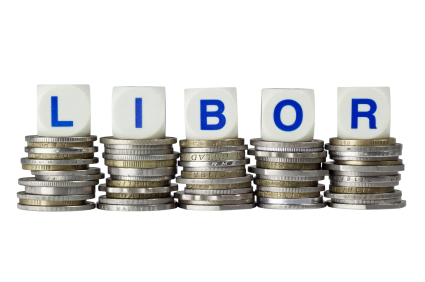Definition
An interest rate cap is an option structure whereby the buyer is protected against rates rising above a pre-agreed level – the option’s strike. A floor gives the buyer protection against rates falling below a pre-agreed strike.
Example
Let us start by thinking of an ‘IBOR’ world. Although most of these interest rate benchmarks are no longer traded as of the date of writing EURIBOR still exists. Think of a 1 year cap referencing 1 month EURIBOR. Let us assume a notional of €10m and a strike of 3% per annum. The cap is a strip of individual options (‘caplets’) on a series of forward EURIBOR rates. So at the start of each month, the buyer would compare the value of 1 month EURIBOR covering the upcoming period to the strike rate and would receive compensation if it were above the preagreed strike rate.

For arguments sake let us say that EURIBOR fixed at 4% p.a. As a result the buyer would receive €8,611 [(4% -3%) * €10m * 31 / 360] from the seller. If one month EURIBOR fixed at 3% or less, then the buyer does not receive a payout. Note that the EURIBOR value and the settlement amount are known at the start of the period but settled at the end.
Under an IBOR framework there would be n-1 options in this structure. That is for a 12 month deal referencing 1m EURIBOR there would only be 11 options. This is because EURIBOR for the first period is set on the trade date. There is no uncertainty as to EURIBOR’s value and so little point in buying an option on this first period.
Risk Free Rates
However, in a RFR world this will change. The demise of LIBOR has seen the increased usage of risk free rates such as SOFR (secured overnight funding rate). LIBOR was a ‘term structure’ interest rate – that is there were a suite of rates available that would cover forward looking periods (e.g. 1 month, 12 month). Currently, SOFR is an overnight rate.
So how would a 12 month cap with monthly resets work with an o/n rate such as SOFR? This time the settlement amount will not be known until the end of the period. The interest rate used to determine the settlement amount will be a compounded value based on the daily observations during the month. And perhaps most strikingly, there will now be 12 options not 11. This is because the compounded SOFR value used to determine the first settlement amount will not be known until the last day. Admittedly, since the rate used to settle each period is a compounded average, the later observations will have less impact on the final value.
Other resources
Just to add that on the website there is a free option pricing module. Click here to access

